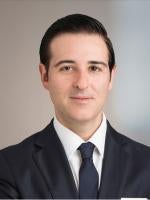Litigators in the life sciences field are no doubt familiar with the so-called “artificial” act of infringement established by 35 U.S.C. § 271(e)(2)(A)-(B): namely, that a party can be sued for patent infringement by merely filing an Abbreviated New Drug Application (“ANDA”) for a generic drug or a Biologics License Application (“BLA”) for a biosimilar drug. The filing of such an action can allow for, among other things, the resolution of patent infringement disputes before the generic (or biosimilar) drug enters the market.
The concept sounds simple enough, and in many cases, it is not a source of contention despite being prevalent in nearly all pharmaceutical litigations. But, of course, the devil is in the details. For example, if a company submits an ANDA seeking to market a generic drug only for unpatented uses, is that company nonetheless liable based on the “artificial” act of infringement under 35 U.S.C. § 271(e)(2)? Some have tried to argue that the answer to this question is “yes” under the language of 35 U.S.C. § 271(e)(2)(A), which makes it an act of infringement to seek approval to market a generic drug “the use of which is claimed in a patent before the expiration of such patent.” (Emphasis added.)
The Federal Circuit recently issued a precedential opinion addressing this very question. In the case at issue, the plaintiffs (who developed and patented the drug) held only expired patents on the drug compound itself, but owned several active patents related to specific methods of treatment (the “Method of Treatment Patents”). The defendants’ ANDA sought approval to market a generic version of the drug only for uses not covered by the Method of Treatment Patents.
Despite the prohibition on marketing the drug for claimed uses, applicable law allows medical practitioners to prescribe the generic version however they deem appropriate, even if the prescription would infringe the Method of Treatment Patents. As such, according to the plaintiffs, under 35 U.S.C. § 271(e)(2)(A), “it makes no difference that the drug is proposed to be sold for a use not covered by” the Method of Treatment Patents because “the drug could be prescribed for those patented uses.”
The Federal Circuit rejected plaintiffs’ analysis of the “artificial” act of infringement, ruling that the “use . . . claimed in a patent” under 35 U.S.C. § 271(e)(2)(A) “must be the use for which an applicant is seeking marketing approval.” According to the Federal Circuit, a contrary result would allow a brand to “maintain its exclusivity merely by regularly filing a new patent application claiming a narrow method of use not covered by its NDA.”
As such, the Federal Circuit clarified that 35 U.S.C. § 271(e)(2)(A) does not provide “an independent basis of infringement” separate from those set forth in other sections of 35 U.S.C. § 271. Because defendants were not seeking approval to market the drug at issue for a patented use, the Federal Circuit held that they did not infringe the Method of Treatment Patents.
The case is H. Lundbeck A/S et al. v. Lupin Ltd. et al.., appealed from C.A. No. 18-cv-00088, in the District of Delaware—a copy of which can be found here.




 />i
/>i

